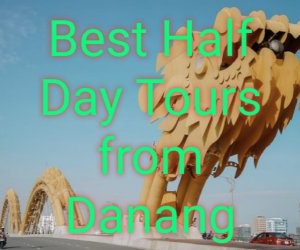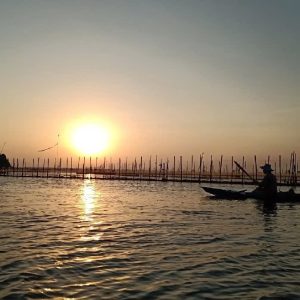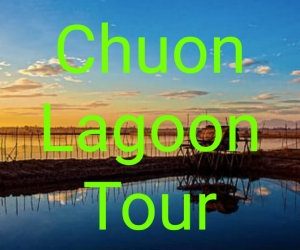The My Son Sanctuary Tour from Hoi An is one of Central Vietnam’s most profound cultural experiences, unique tour to do around Hoi An ancient town. Being served as the political and religious, spiritual center of the lost Champa Kingdom which existed in Central Vietnam from the 2nd century to the 15th century, My Son Sanctuary, located around 40 kilometers southwest of Hoi An, is now a UNESCO World Heritage Site and is a must-see cultural heritage site in Vietnam. This revered Hindu temple complex, which is tucked away in a verdant valley encircled by mountains, gives visitors a thorough understanding of Vietnam’s ancient history, architecture, and religious customs.
So, for those who travel to Hoi An town and would like to do My Son Sanctuary day trip from Hoi An, it is both enjoyable and worth value with your money. Thus, whether you pick My Son Sanctuary Private Tour, a Small My Son Group Tour, or a Guided Half day My Son Tour, this adventure mixes history, culture, and breathtaking countryside vistas, making it an unmissable travel experience for both first-time visitors and returning tourists.
Contents
- 1 OVERVIEW OF MY SON SANCTUARY – UNESCO WORLD HERITAGE SITE:
- 2 WHY YOU SHOULD CHOOSE MY SON HALF DAY TOUR FROM HOI AN?
- 3 OPTIONS FOR MY SON SANCTUARY TOURS FROM HOI AN:
- 3.1 Half-Day My Son Sanctuary Private Tour
- 3.2 Private My Son Sanctuary Sunrise Tour from Hoi An
- 3.3 Small Group My Son Sanctuary Tour from Hoi An
- 3.4 Guided My Son Sanctuary Sunset Tour from Hoi An
- 3.5 Full Day My Son Sanctuary & Hoi An City Tour from Hoi An
- 3.6 My Son Sanctuary & Marble Mountains Full Day Trip from Hoi An
- 4 A TYPICAL ITINERARY FOR MY SON SANCTUARY TOUR:
- 5 PRACTICAL TIPS FOR MY SON SANCTUARY PRIVATE TOUR?
- 6 HOW TO TRAVEL FROM HOI AN TO MY SON SANCTUARY?
- 7 WHY YOU BOOK MY SON SANCTUARY TOUR WITH PREMIUM TRAVEL VIETNAM?
- 8 MY SON SANCTUARY TOUR PRICE, TOUR INCLUSIONS, TOUR EXCLUSIONS?
- 9 MY SON SANCTUARY COMBINED WITH OTHER HOI AN EXPERIENCES:
- 10 FAQs ON MY SON HINDU TEMPLE TOUR FROM HOI AN?
- 11 IN CONCLUSION:
OVERVIEW OF MY SON SANCTUARY – UNESCO WORLD HERITAGE SITE:
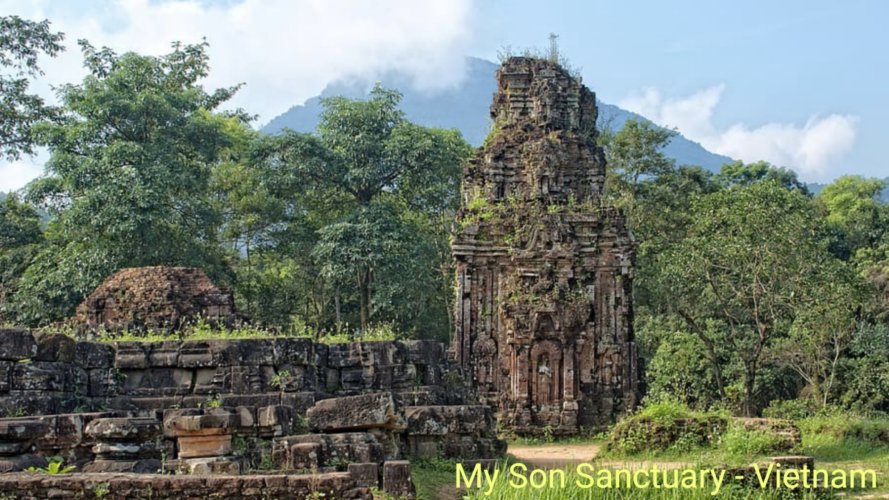
My Son Sanctuary, located in central Vietnam near Hoi An, is a remarkable archaeological site and a testament to the ancient Cham civilization. This UNESCO World Heritage site holds immense cultural and historical significance. The sanctuary served as a religious and political center of the Cham people from the 4th to the 14th century.
The complex consists of a series of stunning temple towers, showcasing the architectural brilliance of the Cham dynasty. These structures were dedicated to Hindu deities, primarily Lord Shiva, and served as places of worship and royal ceremonies.
Despite enduring the ravages of time and conflicts, My Son Sanctuary retains its mystical charm and offers a glimpse into the Cham civilization’s rich heritage. The intricate carvings, intricate brickwork, and architectural marvels reflect the artistic and technological prowess of the Cham people.
Today, My Son Sanctuary is one of Central Vietnam’s most prominent ancient temple complexes. Book Half Day My Son Sanctuary Tour from Hoi An will provide you a unique opportunity to immerse oneself in Vietnam’s ancient history and witness the fusion of Hindu and indigenous Cham cultural elements. It is a place of immense importance and a testament to the region’s past glory.
WHY YOU SHOULD CHOOSE MY SON HALF DAY TOUR FROM HOI AN?
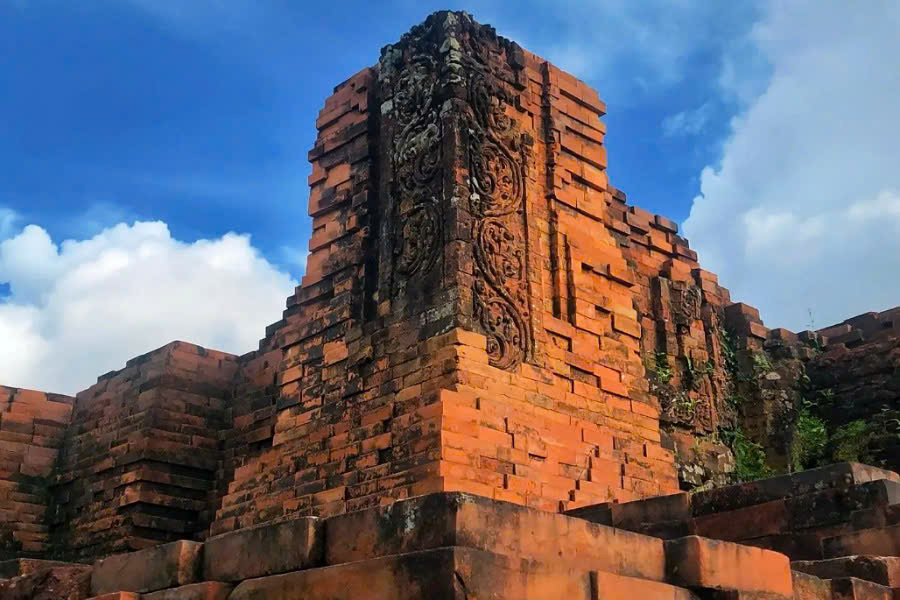
Explore Ancient Champa civilization Vietnam: My Son Holy Land
Booking guided tour to My Son Sanctuary from Hoi An, travelers can have an amazing opportunity to discover the lost civilization that ever existed in Central Vietnam. Thus, My Son Sanctuary offers a fascinating look into the ancient civilization of Vietnam: Champa Kingdom. This UNESCO World Heritage site includes a collection of Hindu temple remains ranging from the fourth to thirteenth centuries. My Son, formerly a major religious and political center, now houses magnificent sandstone carvings and architectural marvels that reflect the Champa culture’s distinctive art and devotion. Visitors can explore the old structures, learn about Champa’s history, and admire the lush beauty of the surrounding countryside.
Close Proximity and Simple Access
As we all know, Hoi An is the closest major tourist destination to My Son Sanctuary, making it an ideal starting point for any visitors want to explore My Son Hindu Temples in a half day. Consequently, typical Hoi An to My Son Sanctuary Tour lasts approximately 4.5 – 5.5 hours round trip, making it perfect for travelers with limited time.
Explore the Ruins of Hindu Temples with Local guide Experts
Booking My Son Sanctuary guided trip from Hoi An, a local tour guide with in-depth understanding of the site’s history, symbolism, and spiritual significance definitely makes you have a better knowledge into the Cham culture. Being local experienced tour guides with profound knowledge of the land of the Cham Dynasty, these English-speaking tour guides brings the My Son Ruins to life by telling intriguing anecdotes about the Champa Kingdom’s history, Hindu statues stories, and temple construction methods.
Various Tour Options
Choosing My Son Sanctuary Tour Options from Hoi An, everyone can pick up an appropriate tour suiting everyone’s travel style, from low-cost group trip to luxury private My Son Sanctuary tour. Most of these tours will include hotel pick up & drop off, air-conditioned transportation, admission tickets, English speaking tour guide, and bottled water for added convenience.
OPTIONS FOR MY SON SANCTUARY TOURS FROM HOI AN:

Half-Day My Son Sanctuary Private Tour
A Half-day My Son Sanctuary tour is the perfect choice for visitors seeking a focused cultural experience without taking up too much time. This tour typically depart in the morning either at 8 a.m or 9 a.m, offering guests a relaxed time to explore My Son Temples and enjoy cultural performance show at theater in just half day. A remaining time for the day, guests can explore Hoi An ancient town or go shopping. Hence, this option is deal for those on short stays in Hoi An, families, senior travelers, and cruise passengers with tight schedules, allowing travelers to explore the ancient Champa ruins and learn about their rich history efficiently in a convenient, immersive way while making the most of limited time in Vietnam.
> Book My Son Private Tour here
Private My Son Sanctuary Sunrise Tour from Hoi An
Secondly, as you travel to Hoi An in the summer and want to avoid the heat around Hoi An’s areas, let’s hop on Private My Son Sanctuary Sunrise Tour from Hoi An, giving you a serene and exclusive experience, allowing guests to enjoy the ancient ruins in tranquility and avoid crowds, the midday heat. Embark on this early morning tour to My Son Sanctuary, travelers can expect a cooler and more peaceful atmosphere to explore the historic site, seeking a memorable, intimate visit to witness the sunrise over the ruins, enhancing the spiritual and cultural connection to this UNESCO World Heritage site.
> Have a look at My Son Sanctuary Sunrise Private Tour
Small Group My Son Sanctuary Tour from Hoi An
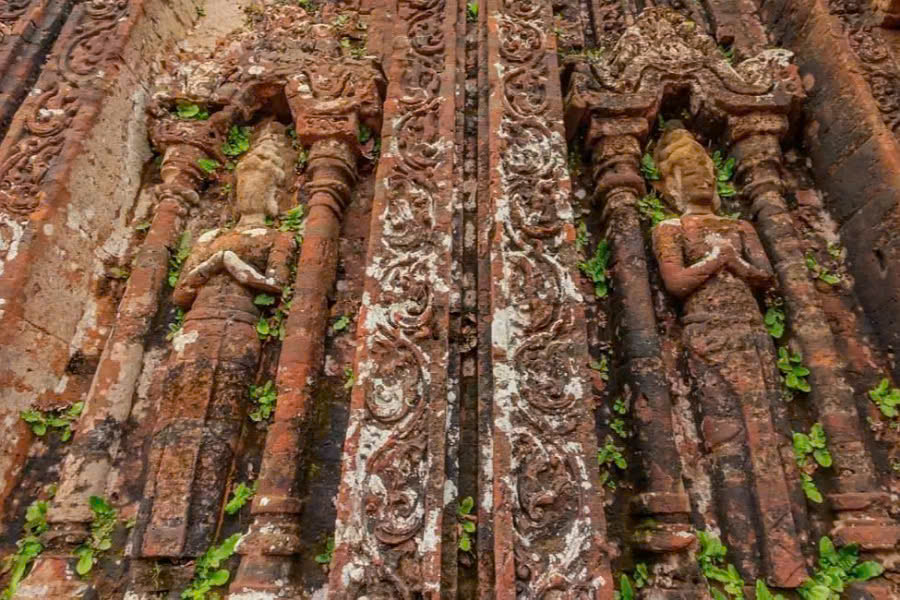
A budget-friendly My Son Sanctuary tour is to join a small group trip from Hoi An. Thus, this half day excursion provides you with an intimate and personalized approach to discovering the UNESCO World Heritage site. This trip, which has a limited number of participants, offer a low-cost immersive experience with an experienced tour guide who is locally born and gives unique insights into the Cham civilization’s history and culture. You will embark on a mini van with around 10 to 12 people, spend time to explore the old temples, carvings, and architecture. So, this tour option is followed with a short visit at a rice paper making family and a small lunch at a local restaurant.
Guided My Son Sanctuary Sunset Tour from Hoi An
Visitors can enjoy a captivating experience as they tour the historic Cham temple complex in the lovely sunset hours. Watching the sunset spread a warm glow over the ruins provides a fantastic setting for photography and reflection. This afternoon guided tour provides in-depth insights about My Son’s history, architecture, and cultural significance, allowing guests to see the ruins with less visitors, looking for a more calm and intimate exploration while enjoying sunset by taking river cruise on the Thu Bon river.
> Book My Son Sanctuary Private Sunset Tour here
Full Day My Son Sanctuary & Hoi An City Tour from Hoi An
Perfect balance of history, culture, and local life, making it ideal for those looking for visiting two UNESCO Heritage Sites in one day, the Full Day The My Son Sanctuary & Hoi An City Tour departs from Hoi An will give a full exploration of central Vietnam’s rich cultural history. Thus, begin your day with a guided tour of the ancient Cham temples at My Son, where you will learn about their intriguing history and architectural marvels. Have lunch of a local dish either Cao Lao or My Quang (Quang Noodle) then in the afternoon, you’ll wander the picturesque alleyways of Hoi An, stopping at iconic attractions including the Japanese Covered Bridge, historic homes of Quan Thang & Tan Ky, and bustling Hoi An market. So, this full day trip is for those who want to have glimpse at Cham’s culture while soaking up the vivid ambiance of the beautiful Hoi An town.
My Son Sanctuary & Marble Mountains Full Day Trip from Hoi An
Last option of My Son Sanctuary Tours from Hoi An is to take part in My Son Sanctuary & Marble Mountains Full Day Trip from Hoi An. Hence, you will be on a thrilling cultural experience that incorporates two of Da Nang Vietnam’s most famous attractions. Begin your day by exploring My Son’s ancient Cham temple complex, enjoy Cham performance show. After that, visit the Marble Mountains where you may climb limestone peaks, explore caves and pagodas, and enjoy panoramic views of the countryside and ocean. This full-day tour is an ideal combination of history, spirituality, and natural beauty. It is perfect those looking for a memorable vacation that emphasizes Central Vietnam’s various cultural and geographical features.
A TYPICAL ITINERARY FOR MY SON SANCTUARY TOUR:
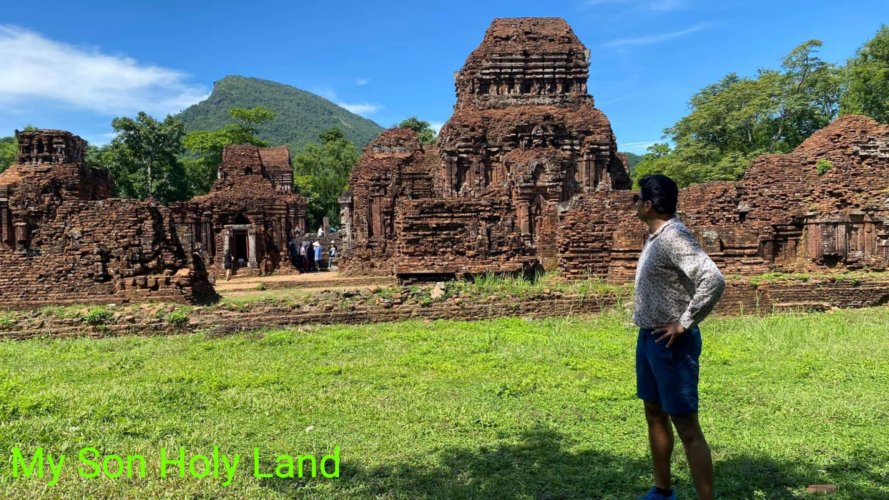
Morning Departure from Hoi An
Thus, kick off your My Son Holy Land tour from Hoi An with a hotel pick up in Hoi An, followed by a lovely drive through village’s lanes, rural parts of Vietnam. Along the trip, you’ll see rice terraces, small villages, and tranquil countryside scenery.
Exploring the Cham Ruins
After around an hour of driving, you’ll reach the site and your guide will lead around the main temple complexes, giving fascinating information about each structure’s history and purpose. Furthermore, you will discover the Cham people’s intriguing religious beliefs, including their strong spiritual ties to Hinduism and the Hindu gods they worshiped such as Shiva, Brahma, Vishnu and so on. Through the guidance, you seem to understand stories of Hindu deities and cosmic themes interwoven in the carvings and architecture. Besides, you’ll gain an understanding for the extraordinary ancient construction techniques utilized to build these amazing Hindu monuments which demonstrate the Cham’s excellent engineering abilities.
Cham Cultural Performance Show
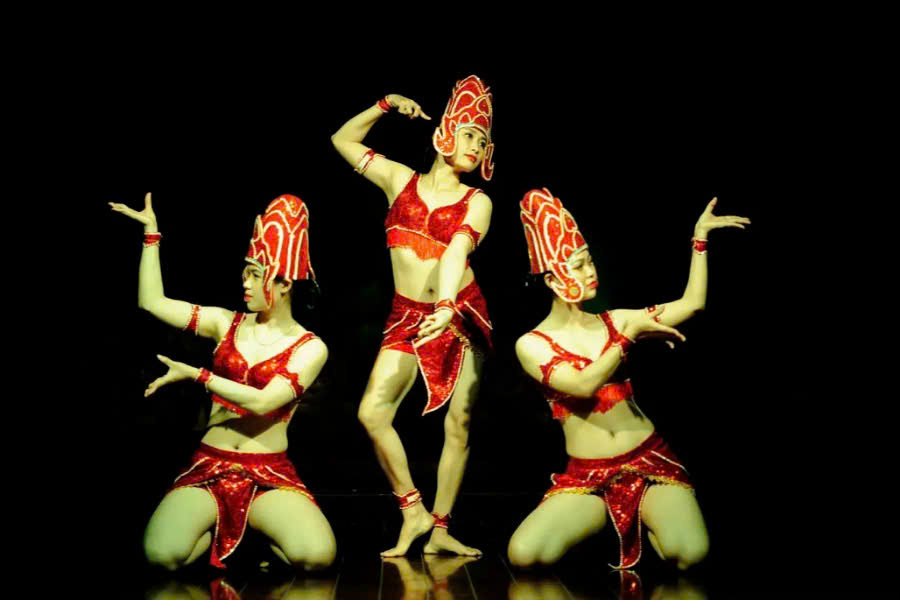
End morning My Son sanctuary tour is usually include with a traditional Cham dance performance, which adds a colorful cultural component to your adventure. The Cham dance show performed by local performers dressed in vibrant traditional Champa’s costumes, depicting the mythical stories, religious ceremonies and the daily life of the Cham people. The show with sophisticated hand gestures, and deep music combine to create an immersive experience that emphasizes Cham culture’s rich creative tradition. Watching this performance, you will appreciate the artistic talents passed down through generations, making your visit to the Cham Ruins more meaningful.
Rice paper making demonstration (optional)
On the way back to Hoi An, you can visit a rice paper making family business where you witness how rice paper, rice noodles are made. Later, you can sit down and do it your own to get more insight into the Vietnamese culture.
Return to Hoi An
Lastly, you’ll be dropped off at your hotel. Your Half day My Son Sanctuary Tour is finished here.
BEST TIME TO VISIT MY SON SANCTUARY?
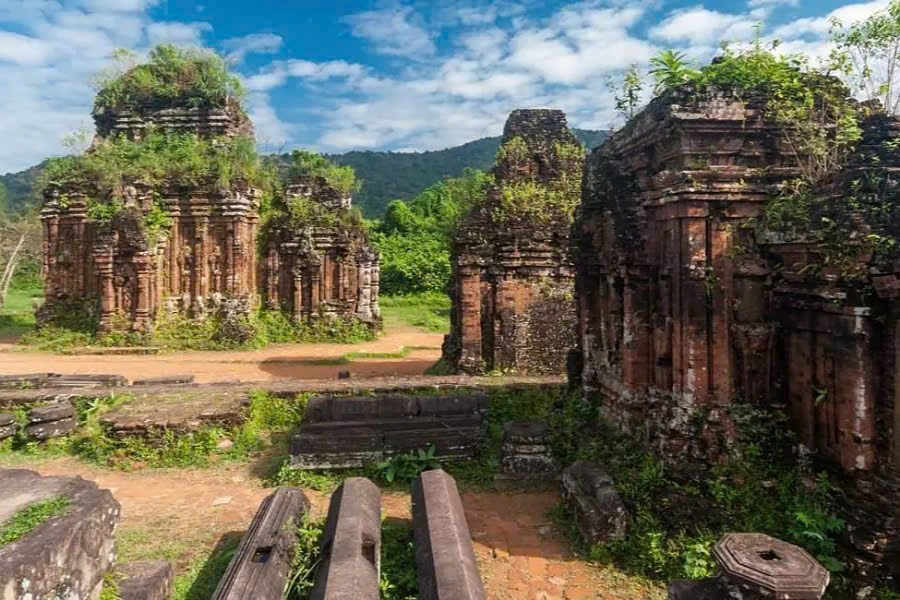
The best time to visit My Son Sanctuary is early in the morning, between March and September, when the temperatures are cooler and the site is less crowded. This allows you to experience the ancient ruins in a peaceful and serene atmosphere, making it an ideal time for photography and exploration.
If you’re looking for the good weather, the dry season from February to August is the way to go. However, if you visit My Son in the summer, it can be very hot & humid, especially from May to July. Therefore, you can think about doing My Son early morning tour to avoid the heat and beat the crowd. In addition, between September and December is the typhoon season, you have to think about it.
From December to end February, it is perhaps the best time to explore My Son. At this time, there is less rain and a bit cold and windy, suitable for anytime of the day to explore the ruins and when the surrounding landscape is particularly vibrant.
PRACTICAL TIPS FOR MY SON SANCTUARY PRIVATE TOUR?
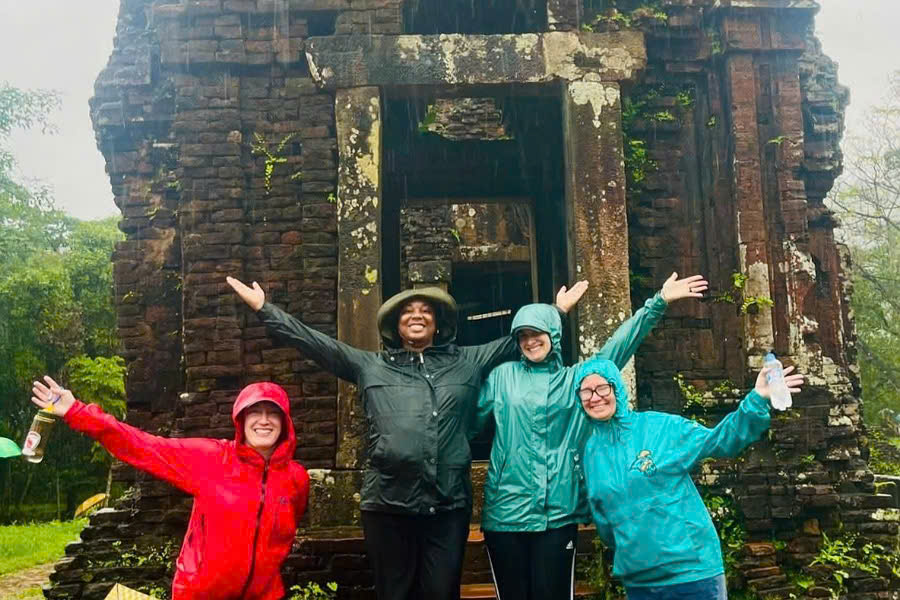
Start Early:
As you are a culture and history enthusiast, you can start My Son Private Tour in early morning to avoid crowds and enjoy cooler temperatures. This also gives you more time to explore the site at a leisurely pace.
Wear Comfortable Clothing and Footwear:
The My Son Terrain might be uneven and sandy, so wear appropriate walking shoes. Dress appropriately for the weather, and think about carrying a hat and sunglasses for sun protection.
Bring Water and Snacks:
Staying hydrated is essential, especially on bright days. Carry bottled water and light snacks to keep yourself energized while exploring.
Hire an Experienced Guide:
A My Son private tour can enhance your visit by providing historical context, stories, and facts about Cham culture and architecture.
Respect the Site:
My Son is a UNESCO World Heritage site, therefore please respect the ruins by not touching or climbing on them, and avoid littering to help conserve the region.
Capture Memories:
Don’t forget your camera or smartphone for shots, but be aware of the rules governing photography in specific areas.
Plan for Weather Variations:
Check the weather forecast and prepare for either rain or sunlight. Bring an umbrella or raincoat if necessary.
Arrive with Plenty of Time:
Allow enough time to tour the entire site without rushing, ideally at least 2-3 hours for a full visit.
HOW TO TRAVEL FROM HOI AN TO MY SON SANCTUARY?
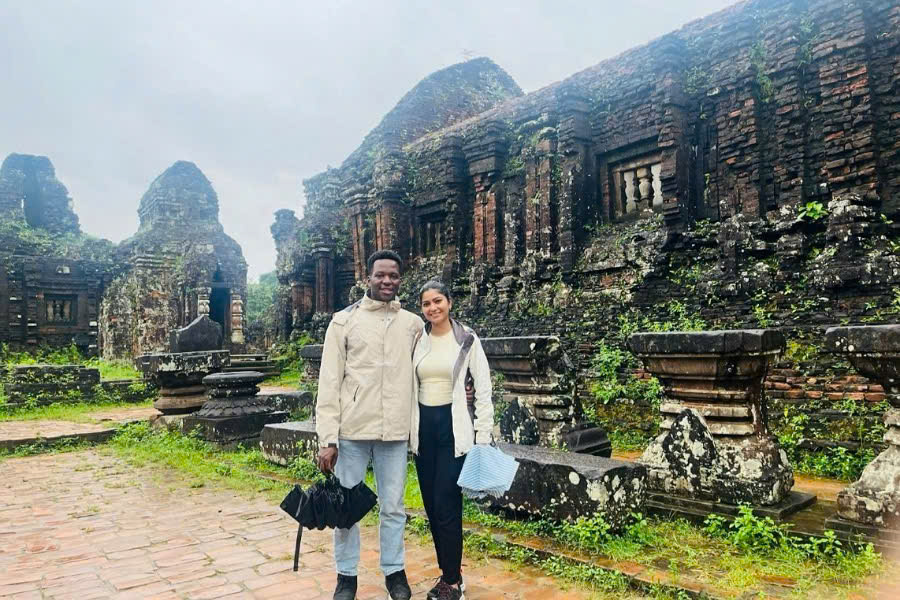
By Private Cars
This is the most convenient way to explore the My Son Hindu Temples, since it allows you to book through a trusted travel agency in Hoi An and comfortably. You can take a private car or book private tour with private car from Hoi An to My Son Sanctuary. Negotiate the price ahead of time, or hire a trusted cab service.
By motorbikes
This is an exciting alternative, since it allows you to sit in the back of a motorbike to see the surroundings. You can book a My Son Sanctuary Tour by Motorbike from a travel agent in Hoi An.
By Jeep
Exciting way to explore the Ruins of My Son, enjoy an open Jeep ride, watching live scene of the countryside of the local residents.
WHY YOU BOOK MY SON SANCTUARY TOUR WITH PREMIUM TRAVEL VIETNAM?
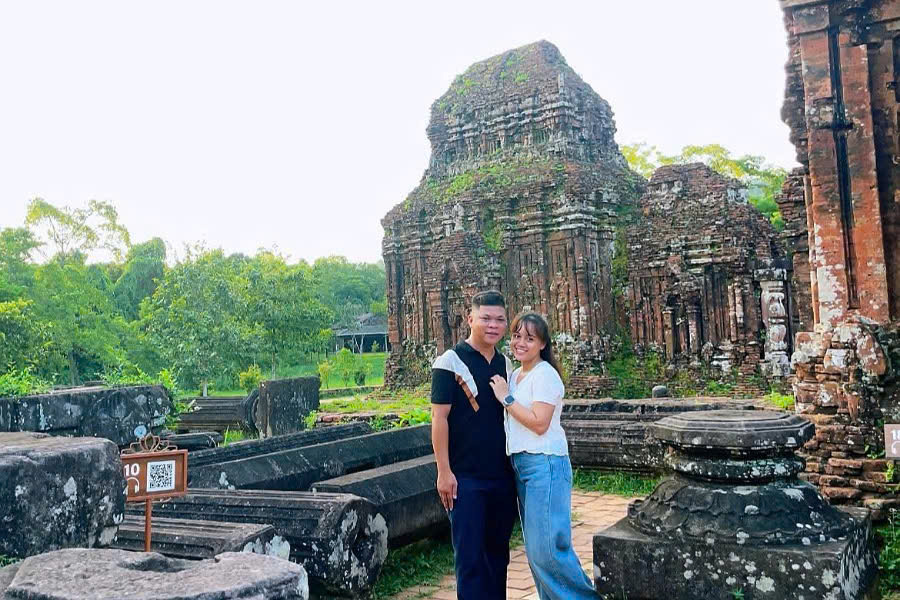
Proud to be one of the best, professional, reliable tour agencies in Da Nang city, Premium Travel Vietnam specializes on providing high-quality, individualized travel experiences and customer satisfaction. Our My Son Sanctuary Tours from Hoi An are carefully planned to ensure your comfort, authenticity, and cultural immersion.
What Sets Us Apart?
Professional English-speaking guides:
We distinguish ourself by employing experienced English-speaking guides who provide in-depth historical insights, customized attention, and captivating storytelling. Their expertise enriches the trip experience by making difficult histories understandable and pleasant. Additionally, these guides are friendly and educated, graduated from foreign languages university with high skills of English, ensuring that clients feel at ease, well-informed, and linked to the cultural essence of My Son Ruins, making every trip a memorable experience.
Air Conditioner Private Transfers:
Premium Travel Vietnam offers air-conditioned private transfers that are comfortable, convenient, and flexible. These contemporary cars provide a pleasant ride, protecting passengers from weather extremes and traffic stress. This service ensures a tailored, safe, and comfortable travel experience, allowing clients to relax and enjoy their sightseeing without concern.
Flexible itineraries
We offer flexible itineraries that respond to individual interests and pace, delivering a personalized experience. Clients can personalize tours, lengthen or shorten trips, and select the activities that interest them the most. This adaptive strategy improves satisfaction by making each journey distinctive, comfortable, and tailored to their specific travel objectives.
At our company, we guarantee that clients understand exactly what they are paying for, encouraging trust and transparency. Premium Travel Vietnam delivers clear quotes upfront to avoid surprises. This uncomplicated approach ensures fair and honest transactions, allowing passengers to budget confidently and have a stress-free, smooth experience from booking to completion.
Above all, whether you’re seeking the best My Son Sanctuary tour from Hoi An or a tailored private experience, our team ensures every detail is handled with care.
MY SON SANCTUARY TOUR PRICE, TOUR INCLUSIONS, TOUR EXCLUSIONS?
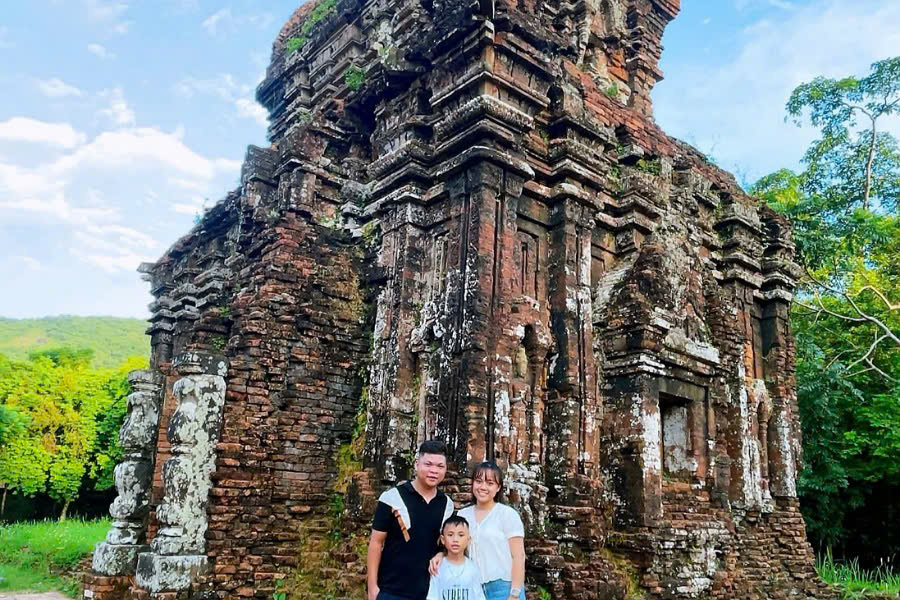
My Son Sanctuary Tour Price:
My Son Holy Land Tour from Hoi An Price is 2.600.000 VND for 2 persons.
Tour Inclusions:
- Private car with A/C
- English speaking tour guide
- Entry tickets
- Water
Tour Exclusions:
- Personal expenses
- Travel insurance
- Tipping
MY SON SANCTUARY COMBINED WITH OTHER HOI AN EXPERIENCES:
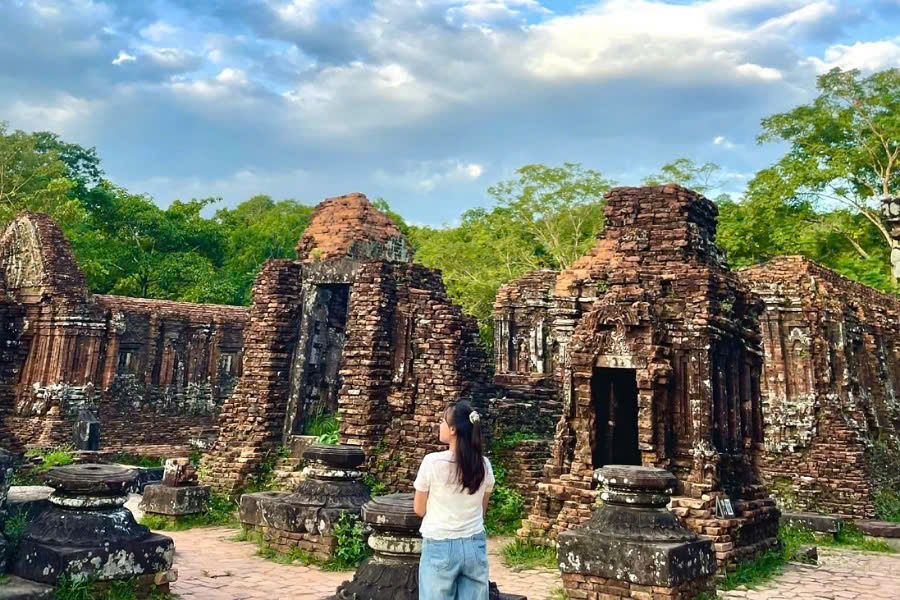
Many travelers choose to combine their My Son Sanctuary visit with:
Hoi An countryside tours:
Hoi An countryside tours provide a quiet vacation to Vietnam’s picturesque rural settings. Visitors can explore gorgeous rice paddies, traditional towns, and local farms to get a sense of true rural life. Cycling along calm trails, touring old temples, and enjoying how the locals make rice paper, weave sleeping mats, carve the wood and even making pottery by hands. These trips offer a cultural authentic experience, revealing the region’s history and traditions. Ideal for nature enthusiasts and those looking for a relaxing, immersed experience outside of Hoi An’s bustling town core.
Hoi An lantern making
Hoi An Lantern making is a lovely traditional skill in which guests can construct their own exquisitely crafted lanterns. Participants are guided by expert artisans through the process of folding and decorating beautiful rice paper lanterns. This hands-on experience gives visitors an insight into Vietnam’s rich cultural heritage while also providing a memorable gift. It’s a pleasant pastime suitable for families, couples, and anybody interested in local customs.
Hoi An River Tour
Hoi An river tours offer a scenic journey through the region’s tranquil waters. Visitors can explore nearby carpentry and pottery villages, witnessing traditional craftsmanship. The tour often includes a fun basket boat ride, gliding through water coconut palms and lush scenery. It’s a perfect way to experience local culture, art, and nature, providing a relaxing and immersive day along Vietnam’s charming rivers.
FAQs ON MY SON HINDU TEMPLE TOUR FROM HOI AN?
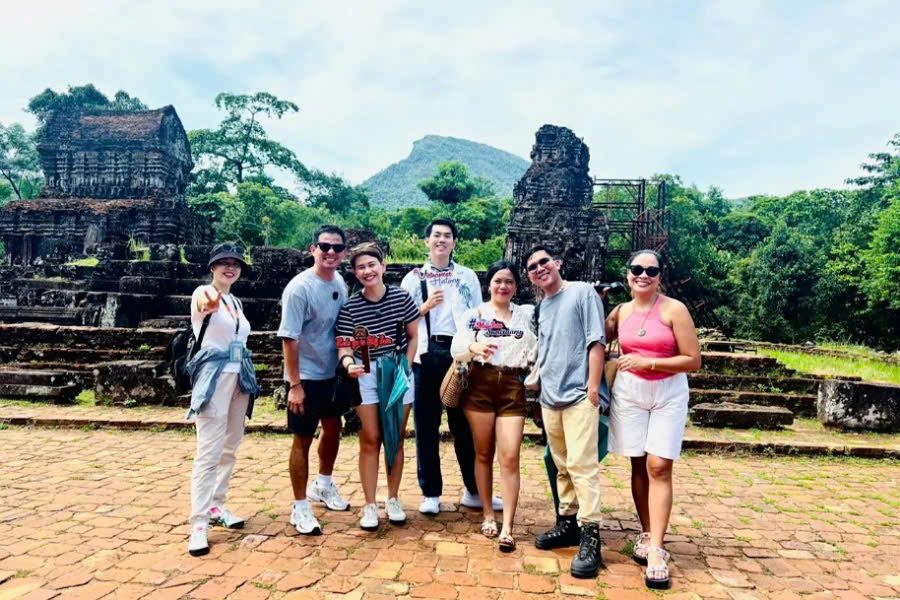
How far is My Son Sanctuary from Hoi An?
Son Sanctuary is approximately 60 minutes by car from Hoi An, making it a convenient half day trip destination.
What is Dress code for My Son Sanctuary?
My Son Sanctuary’s dress code requires respectful and modest apparel. Visitors should dress in clothes that cover their shoulders and knees, such as long slacks or skirts and sleeved tops. This courteous clothing requirement helps to maintain the sanctity of the site and assures a respectful visit.
Is the tour suitable for children?
Yes, My Son Sanctuary tour is family-friendly one, but children should be supervised as there may be walking involved and some areas can be uneven.
Do I need to bring anything special?
Wear comfortable shoes, bring sun protection, water, and a hat. Camera and sunblock are also recommended.
How do I book My Son Sanctuary Tour by Premium Travel Vietnam?
Yes. To book the tour, you can follow some steps:
- Whatsapp +84 979613777 or email to us at premiumvietnamtravel@gmail.com for questions & price about the tour.
- Agree on the tour quote, send us your details (number of passengers, pick up time, hotel name in Hoi An, guests’ name…)
- Premium Travel Vietnam will come to pick up at your hotel/accommodation in Hoi An on the agreed day.
- On tour
- Drop off at your hotel and pay the trip.
IN CONCLUSION:
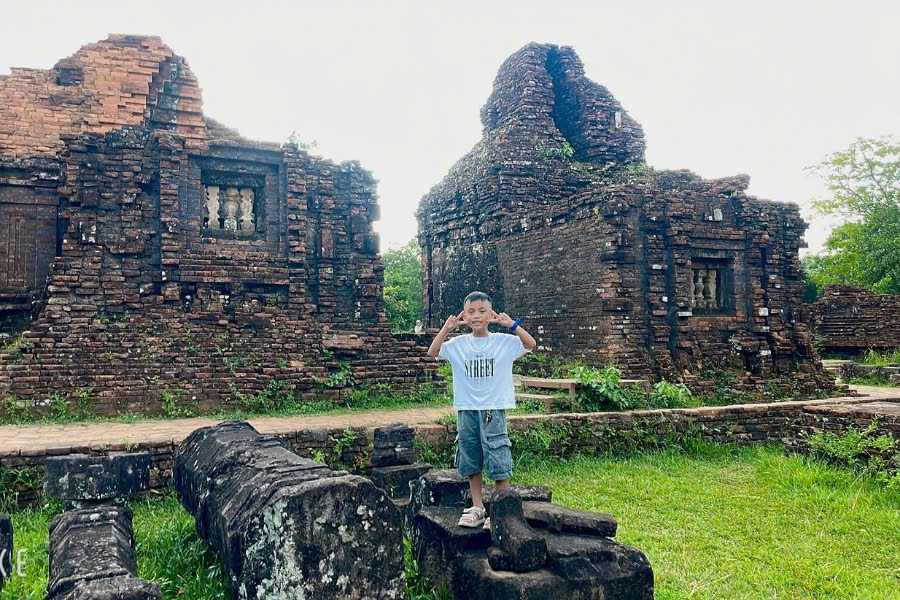
My Son Sanctuary Tour from Hoi An is one of Central Vietnam’s most rewarding cultural trips, giving visitors a unique opportunity to explore the sacred center of the ancient Champa civilization. My Son Sanctuary, a UNESCO World Heritage Site, amazes visitors with its timeless Hindu temples, tranquil valley location, and rich historical significance that cannot be fully appreciated through photographs.
Whether you go for a Half day My Son Sanctuary tour, a small group excursion, or a private My Son Sanctuary tour from Hoi An, this journey offers an ideal blend of history, culture, and scenic scenery. Travel from Hoi An to My Son Sanctuary is simple, educational, and comfortable thanks to convenient hotel pickup, air-conditioned transports, and an English-speaking local guide. The ancient Cham ruins are a must-see for guests looking for an authentic cultural heritage trip from Hoi An. A My Son Sanctuary tour is a must-do experience that completes any Central Vietnam itinerary and leaves lasting memories of Vietnam’s ancient past, with early morning excursions that avoid the crowd and in-depth guided adventure of the temples.



